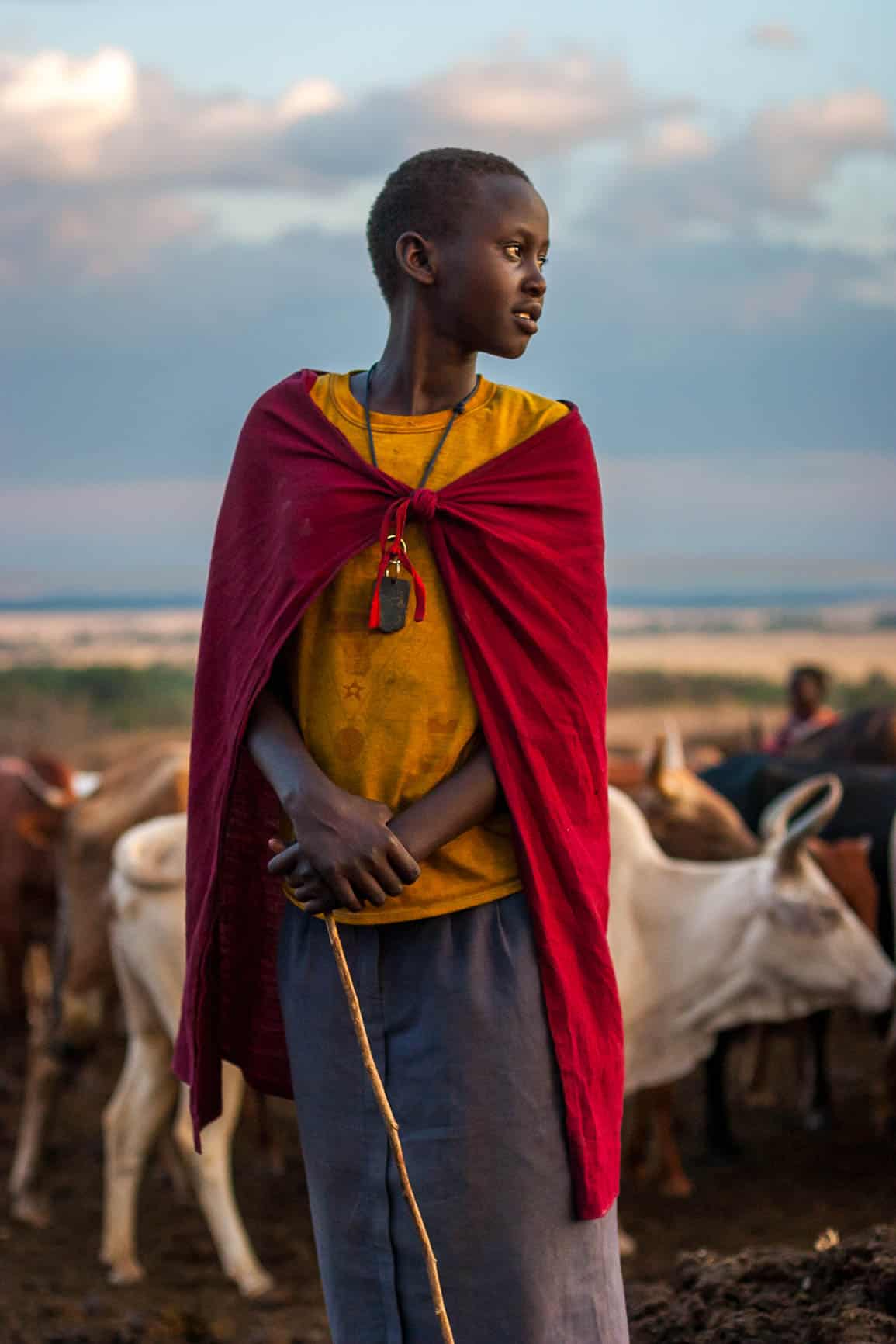Client / Project Self assignment / stock / personal work
Details I was fortunate enough during a photographic safari to Africa to be able to spend time photographing two of the indigenous peoples of Kenya: The Maasai, and their close cousins, the Samburu. Since I am a photojournalist by training rather than a professional wildlife photographer, these experiences were absolute highlights.
To Westerners, the Maasai are perhaps the best-known of the native African tribes of Kenya. Traditionally nomadic pastoralists, they developed a reputation as fierce warriors and lion killers, as they competed for grazing land with those great predators of the savannah. Their legendary vertical leaping ability was developed as a way of intimidating the big cats, who perceived in them not just men but men approaching ten feet tall. Today the Maasai have adapted to tourism and have found ways to benefit from the influx of people into Kenya’s game reserves. Villages in close proximity to the reserves will charge tourists an admission fee to take pictures, and also insist on selling trinkets, some of which are of distinctly dubious origin. In our case, however, the experience was mutually beneficial, and as we spent time getting to know them as people, we found them warm and friendly, and eager to show their way of life to visitors from America.
The Samburu, a Maa-speaking people and close cousins of the Maasai, live mainly in the north of Kenya between Lake Turkana and Ewaso Ngiro River. The Samburu tell visitors a story of how long ago, two brothers parted ways at the foot of Mount Kenya, each taking half of the cattle and half of the goats. One turned north and founded the Samburu people, the other south and the Maasai. This story is apocryphal to be sure, but the cultural similarities are apparent.
Like the Maasai, the Samburu are mainly pastoralists. They graze cattle and goats over wide areas of sparse desert land. Their lifestyle has not changed very much over hundreds of years. The live in low, windowless huts plastered with mud and cattle dung (a good insulator we are told), and survive on livestock, which is their form of wealth. They are a polygamous society, with the men able to take several wives after completing their duty to the clan as moran, or warriors.
The Samburu impressed me with their hardiness. They suffer many hardships with quiet dignity. At the time of our visit, it had not rained for over a year. The village we visited was near the Ewaso Ngiro river, a breeding ground of crocodiles. The very day we were there, a young child who had been tending goats by the river was badly mauled by a crocodile.
Shooting Notes All images captured with Canon EOS digital cameras and EF lenses.
























